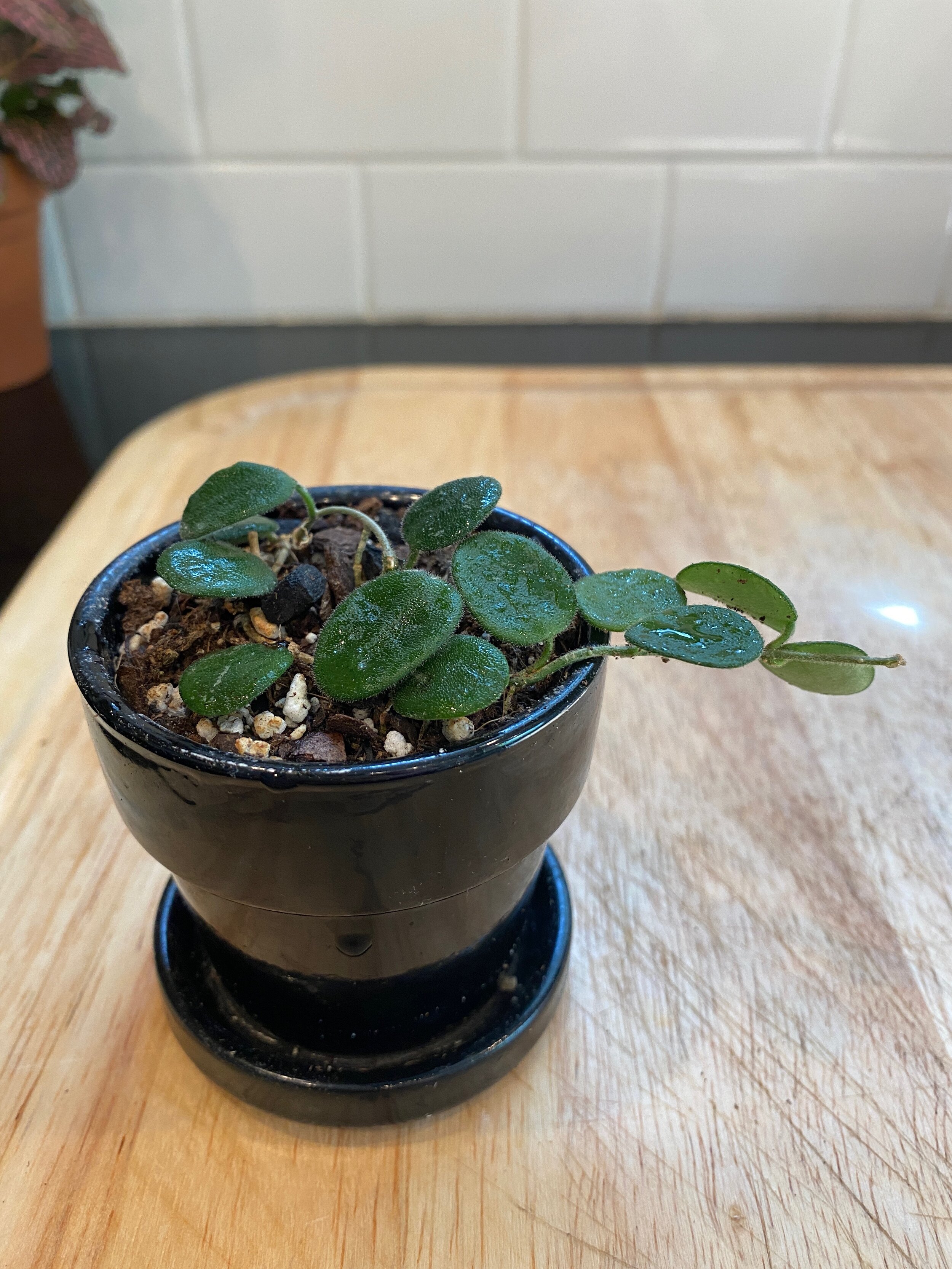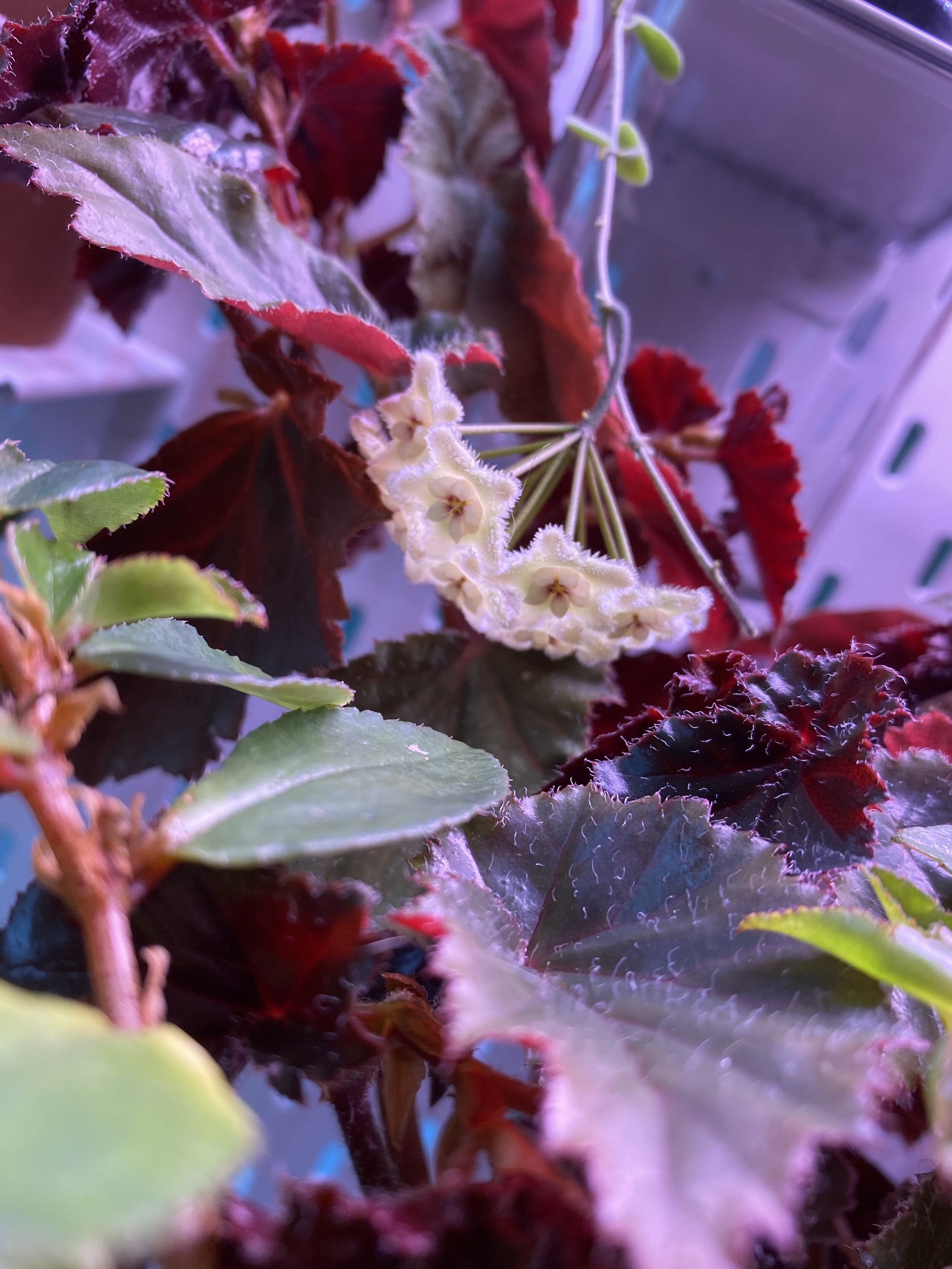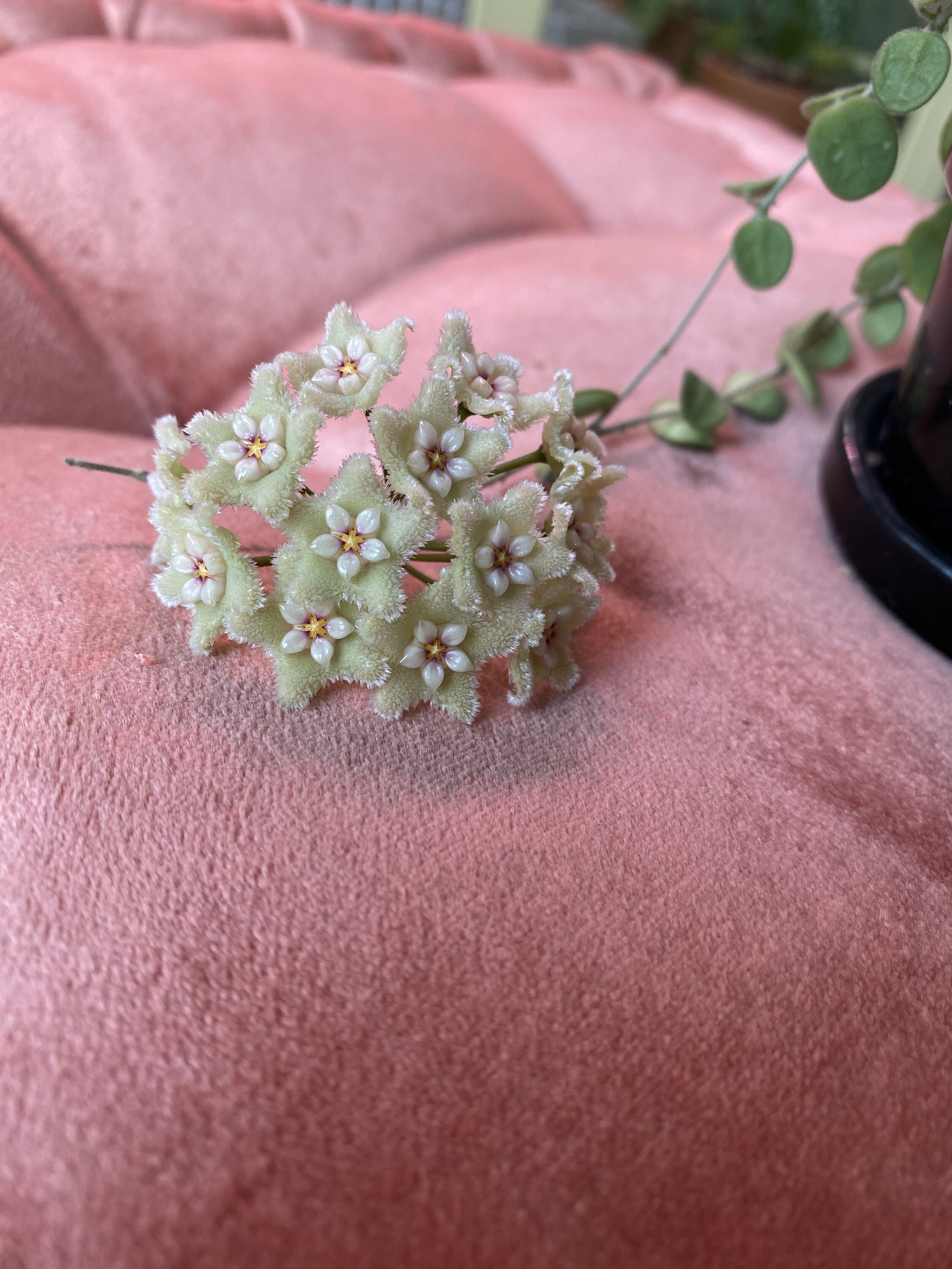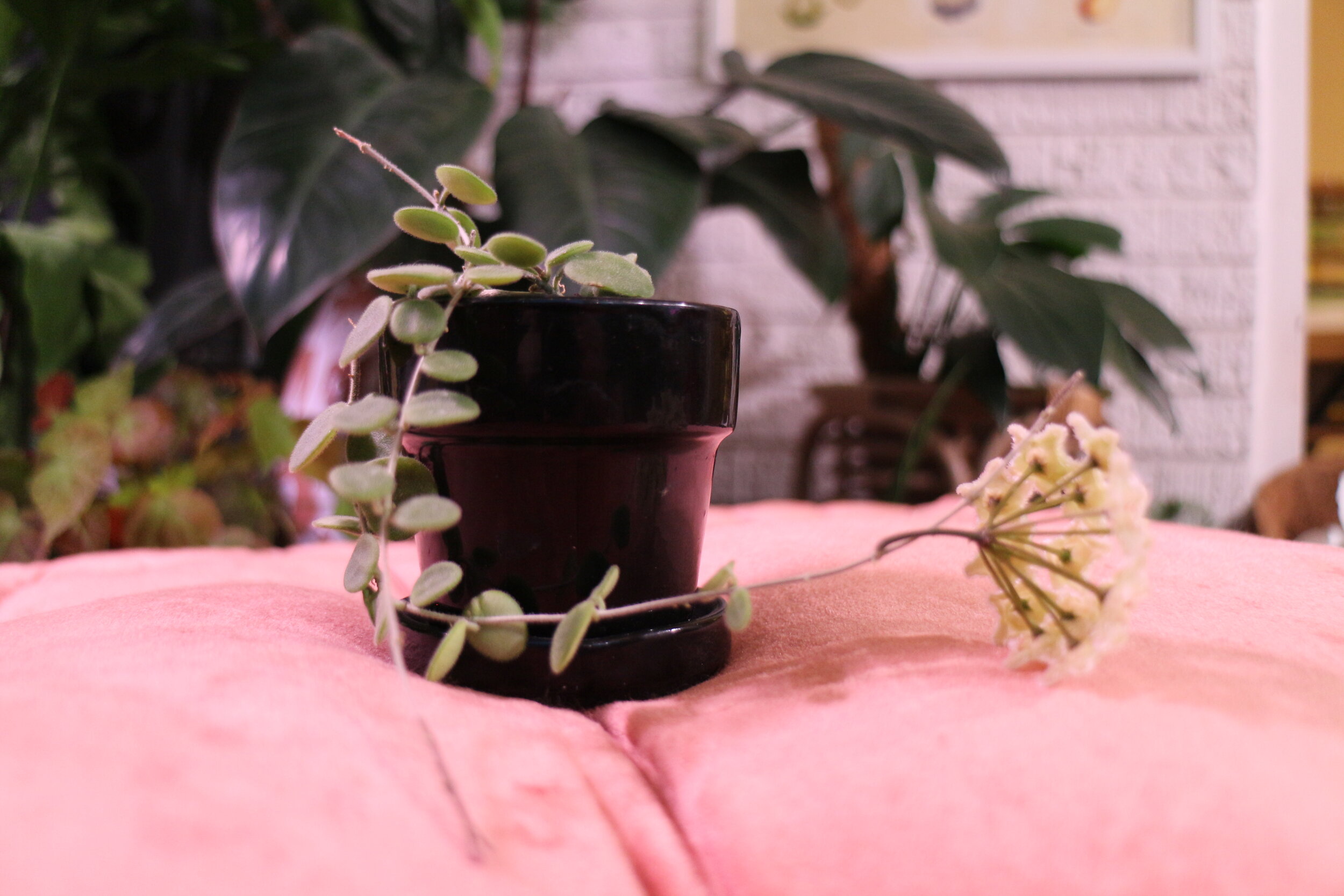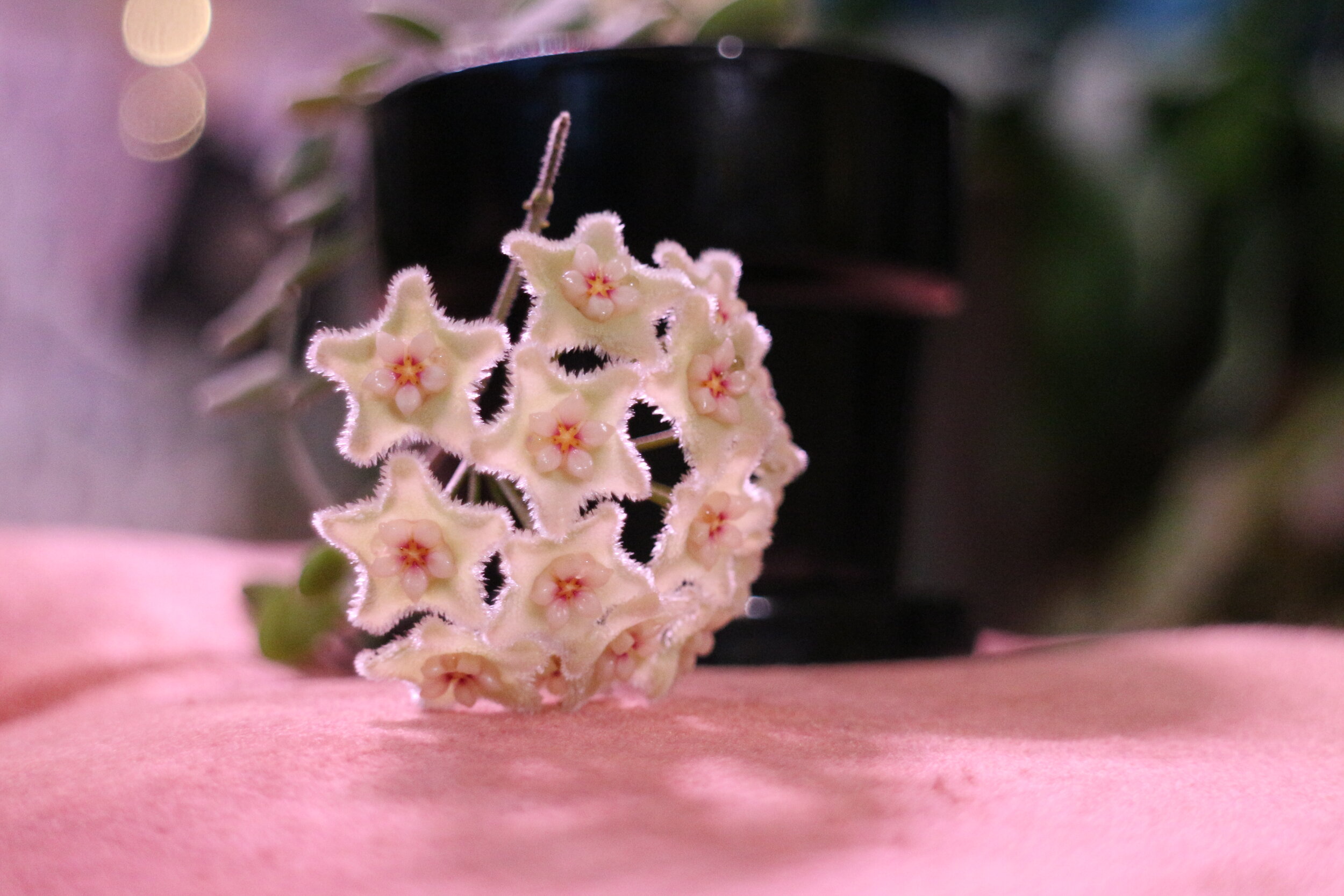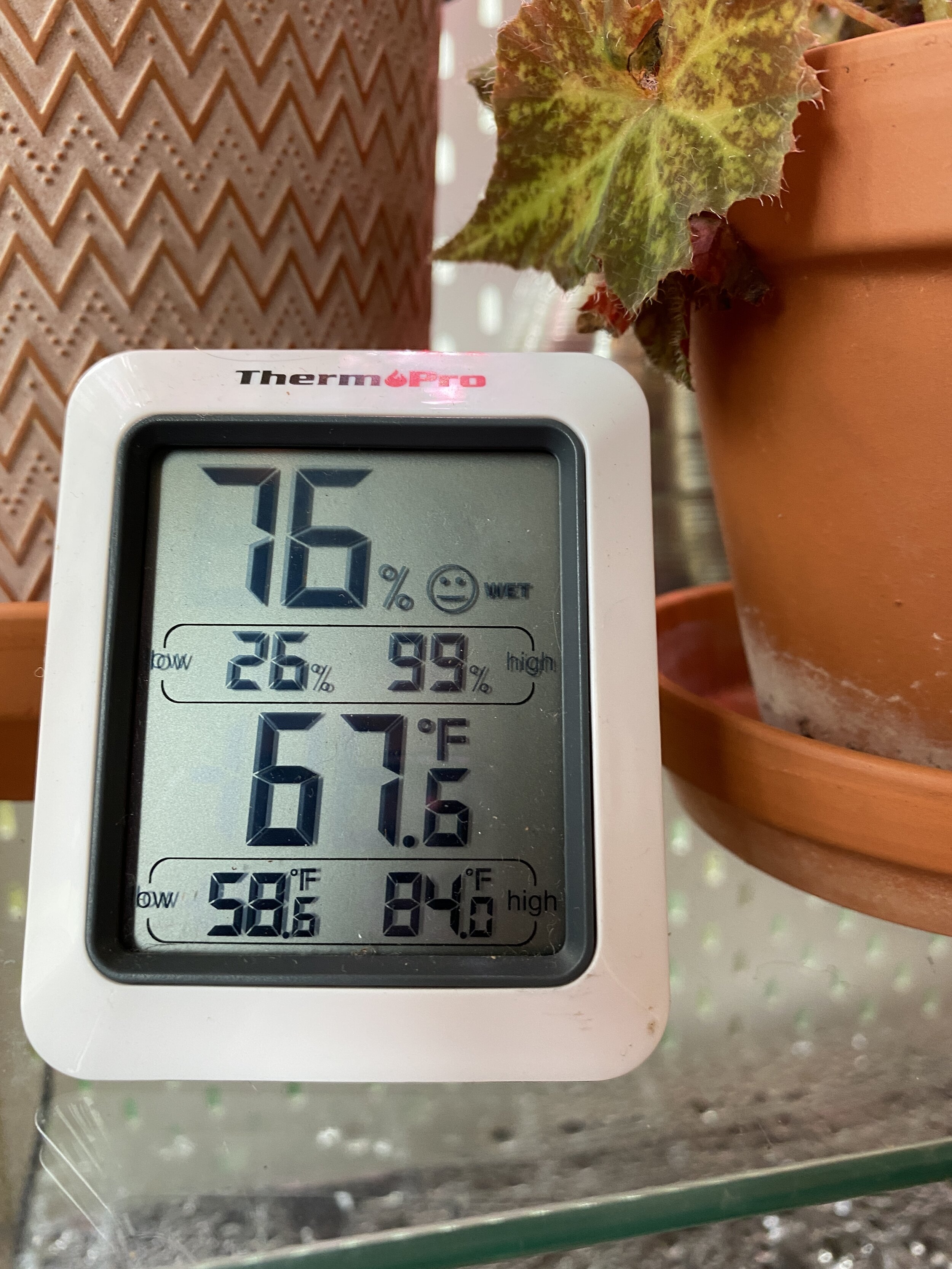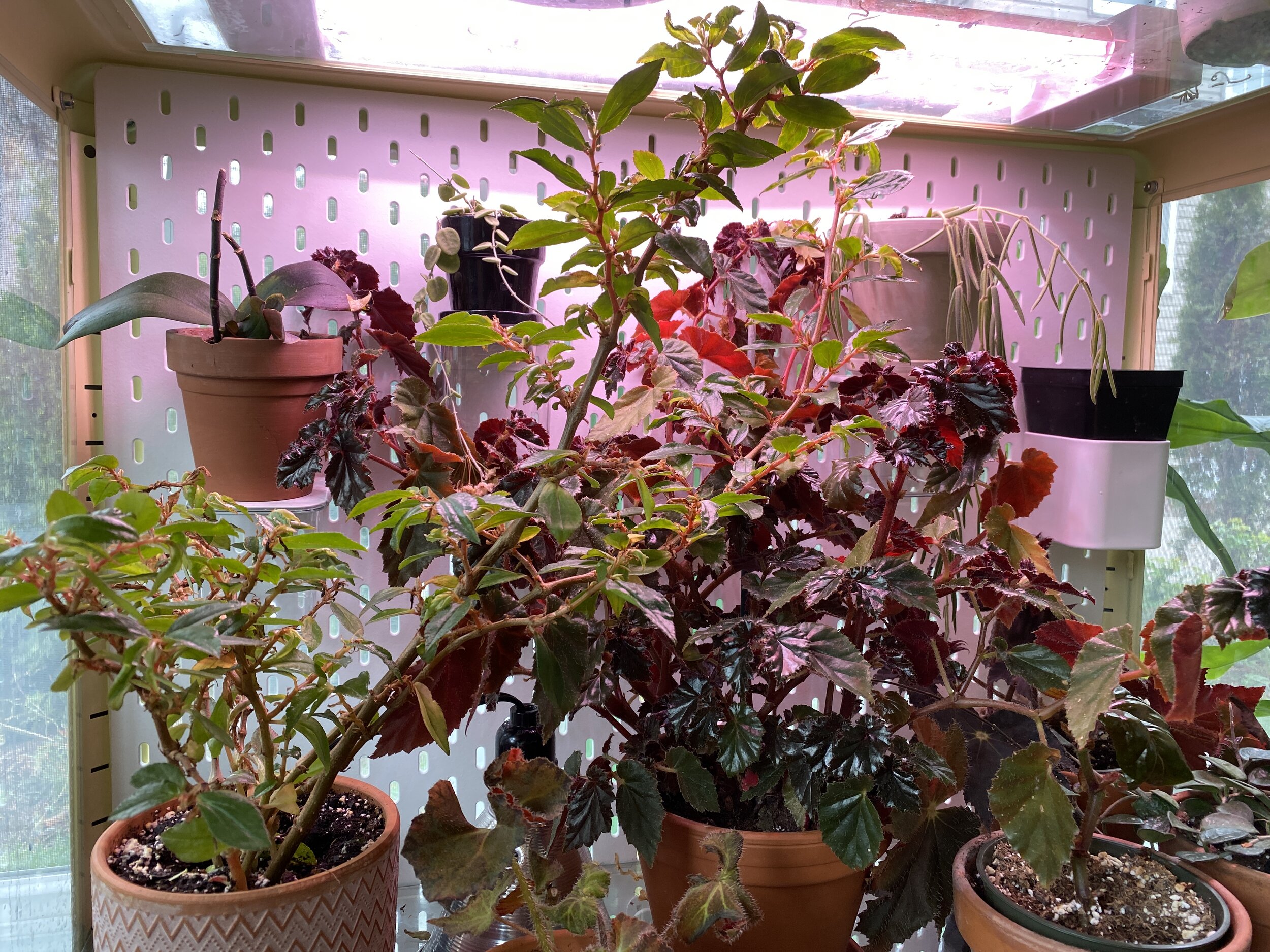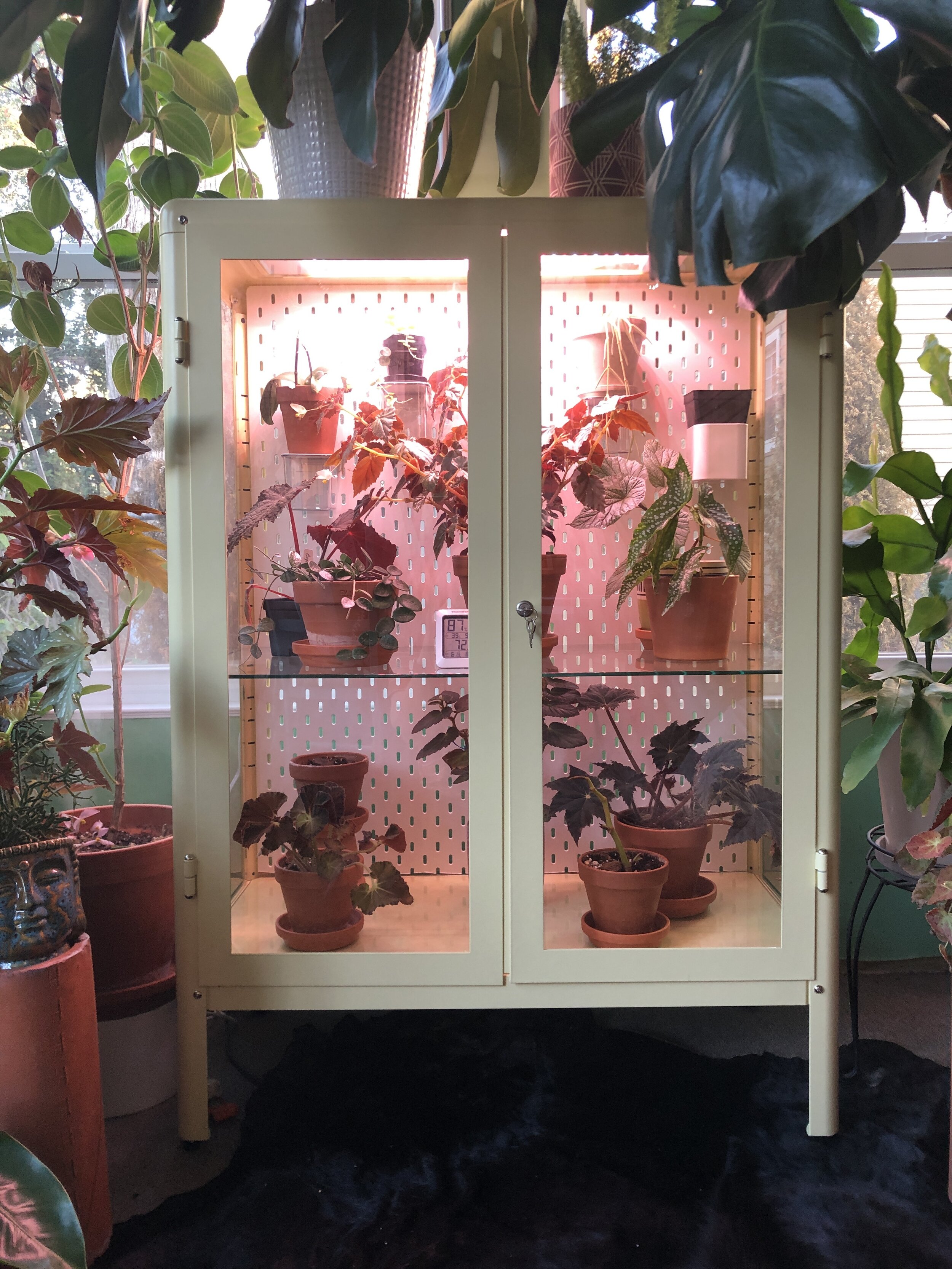Plant Profile: Hoya Serpens Care and Blooming
My Hoya serpens is currently blooming. This is the last thing I ever thought I’d be saying.
Most of the Hoya profiles I write here - Hoya sp. aff. burtoniae, Hoya krohniana, and Hoya linearis to name a few - describe the normal (if ever so slightly modified) household conditions in which I grow my plants to achieve blooms. Hoya serpens, however, is an exception. This plant lives inside one of my greenhouse cabinets, where the temperature and humidity are always adjustable, depending on how much effort I put into the task. The conditions necessary for me to achieve success with this plant, defined in this case by rapid growth and blooms, are very different than many of my other Hoya plants. Check out how I built my greenhouse cabinet here if you’re curious. Otherwise, below you can have a look at the cabinet where my plants live.
I felt that the care and conditions deserve a closer look. I’ll dive into the detailed specifics now, but if you’re just here for the highlights, go ahead and skip to the end where I’ll lay out the bottom line on how I make (and keep) my plant happy.
This plant came with a reputation. I didn’t know if it was true at the time, but I heard whispers throughout the plant community that Hoya serpens could be...difficult...to say the least. A bit of a diva, some said. This type of talk is always subjective, I have to remind myself. Our conditions vary, as do our planting mediums, the health of the plants we buy, and countless other factors. Regardless, I was slightly intimidated when I decided to try my hand at growing this plant.
Hoya serpens has small, pubescent leaves on dainty vines. Leaves have raised veining that, to me, look reminiscent of little turtle shells. Some plants can have grey or white patterning on the leaves, but mine does not. Each leaf is no more than a half of an inch wide, often smaller, and dark or olive green in color. In my experience, Hoya serpens is more of a trailer than a climber. The flowers have a minty green corolla that contrasts beautifully with the darker leaves, and they hang on large umbels that further highlight the minute leaves of the plant. Check out the leaves below. Don’t worry, flower photos to come!
Like Hoya linearis, Hoya serpens hails from the Himalayas. If you’ve read my blog on Hoya linearis, you might recall that this part of the world is home to tropical, subtropical, temperate, and alpine conditions, making it a haven for a wide range of plants. It’s geography is capable of supporting quite an impressive range of plant life. Hoya generally fall into the classification of tropical plant life. Due to the varying altitudes of the Himalayas, temperatures can stray a bit lower than would generally be average for a tropical environment. Like Hoya linearis, serpens is accustomed to fairly consistent year round temperatures, and the infamous monsoon season. This information can be very helpful in coloring the perspective of plant care for Hoya serpens. Generally speaking, consistent temperatures and humidity are appreciated.
My Hoya serpens arrived in chilly Ohio in February of 2020. She did not appreciate being literally uprooted and carted across several states, so she rightfully and immediately snubbed me. She dropped the tip of her vine, and went into hibernation. I gave her time to adjust - no pressure. She began in my “plant triage” area - a North facing bay window in my kitchen with soothing, but constant light. I left her alone, hoping I could get even the faintest sign of happiness out of her. For the longest time, she gave me nothing but confusion. Below is the plant I purchased. The image is not ideal, but I wanted to give a good idea of where we started, so the progress report can take shape.
I waited about two weeks to give Hoya serpens time to adjust to my environment, and then I repotted her into a vessel that was only minimally larger than her former nursery pot. I wanted to keep her roots nice and snug to encourage growth of the foliage. Her new potting mix is the same that I use for most of my Hoya plants, and can be found here under the section for Epiphytes. Here she is after repotting.
After an adequate time in triage, I placed her in an East window that has been kind to several other Hoya plants in my collection. It wasn’t an astounding success, but I could see that she was starting to build some momentum. A new vine had started to develop, and her overall vibe was improving.
Not one to leave well enough alone, in early November 2020, I built and stocked my second greenhouse cabinet. I had purchased the handy pegboard and the jazzy accessories from Ikea to go along with it. The shelves that fit the pegboard are certainly on the smaller side, so I needed to find my tiniest plants to fit the wall space of my greenhouse cabinet. Hoya serpens was tiny enough to fit on a cute little shelf, but there was a functional reason for moving her, too. I wasn’t sure how she would handle the harsh Midwestern winter. Inside the greenhouse cabinet, I could more closely control the conditions. Through living and loving the cabinet life, Hoya serpens found her (I think) forever home, and she became my first Hoya to bloom inside one of my greenhouse cabinets.
Doing the Math
As previously mentioned, this plant arrived at my house in February 2020, and the bloom spur began forming in early 2021. By April 6, 2021, the bloom was fully opened. It took roughly a year for the plant to get comfortable enough to produce a peduncle, and she then immediately put that peduncle to bloom. It took around a month and a half for the peduncle to blossom into an umbel of flowers. The flowers lasted one week, with the fragrance peaking midweek. Below is the progression of her first bloom as it developed. The photos begin on February 26, 2021 when the peduncle had already started forming and producing buds. The final photo was taken on April 4, 2021.
And now, photos of the flower on April 6, 2021.
She even began working on her second peduncle, effectively putting me on another bloom watch for Hoya serpens.
Highlights:
Bear in mind, the following information is what works for me, in my environment and specific set of circumstances with the plant I purchased. It might not work for you, and that’s okay! These are some general tips for anyone who might be thinking of buying Hoya serpens, or for anyone who already owns her, but might be struggling with her indoors.
The most valuable lesson I’ve learned about blooming any Hoya is that light is the key, or at least one of the critical keys. Hoya serpens didn’t grow quickly, form two peduncles, and bloom until the light was increased to the point that she was getting what she needs. This plant receives little natural light, and primarily supplemental light from a blue spectrum grow light that’s about 3-4 inches above her head. I use a Fiet Electric grow light for both of my greenhouse cabinets, as well as my desk and I couldn’t be more satisfied with these grow lights. (FYI: I truly just enjoy these lights. I’m not affiliated with any sellers, I’m just linking to the point where I purchased mine.) I have spaced my plant so that, on a light meter, the intensity reads 7 out of 10. Remember, generally small leaves on a Hoya are an adaptation that means they can take more light. I take this general rule on a case by case basis, and with a grain of salt. My Hoya ‘Rebecca’ and Hoya krohniana bloom all year long in an unobstructed east window, whereas my Hoya lacunosa ‘snow caps’ is in full southern sun. If you put in the time to monitor the plant, and notice how it embraces or shies away from the light you provide, you’ll find the perfect “Goldilocks” situation for your plant. Customization is key. See photo gallery at the end of this section for an example of the reading on a light meter.
I like to keep it humid for this plant. Above 60% is ideal, but if you can get it higher, your plant will thank you. I am always hesitant to mist pubescent leaves, and serpens is pubescent. Relative humidity is her friend. Again, check out the photo gallery below for specifics.
The temperature inside my greenhouse cabinet is consistently in the 60s all year long. I have found that Hoya serpens can withstand short periods of higher temperatures, such as a string of hot days, but not periods of temperatures lower than 60 degrees. I keep a temperature and humidity gauge nearby always and adjust my humidifier and heat mat as needed to maintain the desired conditions. I’m sounding like a broken record, but you can see my exact temperature below.
I watch her leaves closely for signs of drooping and accentuation of the veins under the surface of her foliage. Once those veins become pronounced, and her leaves droop a little rather than looking perky and pert, I water her thoroughly. I have her in a very tiny pot so her roots are snug.
That brings me to potting mix. The mix is chunky and loose as an epiphyte would appreciate. I used the mix for epiphytes that you can read about here. Just scroll to the section on Epiphytic potting mix to get all the info.
I have not fertilized this plant in a long time. At the moment, I’m not going to try to fix anything that isn’t broken. It was her incredibly tiny pot that initially held me back from adding fertilizer. I don’t like the idea of it building up inside the pot, which doesn’t particularly drain or breathe well. In the future, I would repot and fertilize her if I noticed that she was losing vitality. I’d likely aim to fertilize about once a month with tomato fertilizer. I like spray fertilizer for m Hoya plants, but I do not use it on pubescence. It’s important to remember that fertilizer is not medicine, however. Fertilizing a plant that you have just purchased (prior to an acclimation period), or a plant that is in distress is likely to further stress the plant. Because my potting mix contains earthworm castings, among other things, I attribute those nutrients already present in her mix to her health. If you’re in need of a fertilizer, though, the information here might be helpful.
Would my Hoya serpens have gotten to this point without my greenhouse cabinet? I’ll never know. I’d love to hear your thoughts, as well as your experiences with this plant! Has she lived up to her reputation as a diva? Is she an easy bloomer? Comment below, email me here, or find me on Instagram for a chat.





